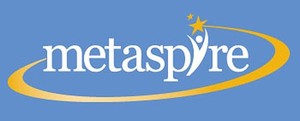A short time ago, I noticed my monthly satellite bill had grown by 150%, so I called my provider to negotiate a better deal. Jason (not his real name) answered the phone with an angry tone similar to my husband’s after the Steelers lose a game. Jason reluctantly helped me, and even though I lowered my bill, which is what I wanted, I ended the call with a not-so-good feeling about his workplace culture.
Have you ever called a customer service department for help only to find a disgruntled representative responding to you on the other line committed to the status quo?
I wonder what might be happening in the company culture to cause them to be so miserable. How likely is it that their leadership team uses incentives to keep employee focus on the customer’s experience? More importantly, how far up the corporate culture chain does this poor behavior go?
Most companies I work with have beautifully written mission, vision, and value statements. Yet oftentimes there are two people within the leadership team who are in conflict and the people reporting to them become unproductive with one another.
When “teenage behavior” runs the boardroom, poor behaviors become instilled within the organization’s culture.
You may have experienced the following “teenage behaviors”:
- Defiant
- Controlling and/or dominating
- Hypercritical
- Averse to feelings
- Unproductive or apathetic
When under stress, we too can become the angry teen, like customer service agent Jason, or we can be triggered in a completely different way: the wounded child.
Today as an adult, there are still occasions when I see senior leaders act as angry teenagers, and wounded child behaviors in their staff are triggered. These behaviors include:
- Feeling overly responsible
- Neglecting your own needs
- Acquiring stress-related illnesses
How do we stop these unhealthy patterns and create our desired culture?
 In coaching, we encourage leaders to engage their Leadership SuperPowers and acknowledge their contribution to the situation no matter how small. Although we can’t control others, we can take responsibility for our impact (even if our impact is unintentional).
In coaching, we encourage leaders to engage their Leadership SuperPowers and acknowledge their contribution to the situation no matter how small. Although we can’t control others, we can take responsibility for our impact (even if our impact is unintentional).
When I am triggered, I remind myself that I am safe and that the mature Super Leader within me has got this situation handled.
How do you coax that Super Leader to emerge when the anger teenager wants to be in charge?
The Super Leader Within emerges when we practice a strategic alignment concept called ACTT.
A is for Alignment. What are your personal values, and how aligned are your values with your company values? Healthy kids and adults naturally exhibit values. When your values and behaviors align with what your company stands for employee engagement will increase.
C is for Crew. “Never doubt that a small group of thoughtful, committed citizens can change the world; indeed, it’s the only thing that ever has.” Margaret Mead. Chances are you’re not the only one being impacted by poor behavior. Who within your organization is willing to address angry and wounded behaviors with you? A good crew will help us change course when things aren’t going in a positive direction.
T is for Transformation. Will you commit to making time to do something different about my situation? Perhaps you can engage with your HR department, work with a business partner or find a good trainer to create team-building activities to engage in fun, childlike behaviors (like being curious, creative and candid), giving your Super Child Within a healthy outlet.
T is for Transition. How will you transition from where you are now to where you want to be? When you know how senior leaders are motivated and have a values-based action plan, the Super Leader Within everyone will instinctively be motivated to create positive organizational change.
So how do you change your work culture?
In my experience, sometimes organizations think they have problem employees, and take an approach with an employee focus, when they actually may have adults with immature behaviors, even in the boardroom. When we ACTT, it’s easier to be open-minded, supportive and reality-based with others. Imagine a world where everyone takes responsibility for their impact, whether it’s intended or unintended!
When used correctly, the ACTT blueprint is a powerful tool to focus on organizational culture and break with the status quo. With the ACTT process and a healthy dose of empathy, we will have more meaningful conversations, effective performance management, and create a more productive workplace.
There is also a distinct competitive advantage that comes with cultural alignment with the organization.




Very nice Nina. I really liked this segment. If I were a larger organization I see how this would be very beneficial. The company I used to work for could’ve have used this. Maybe they would not have gone out of business if they employed ACTT. Thumbs up Bean!!!
Hey Joe, thank you so much for taking the time to read this article. You’re a Super Leader that makes everywhere he goes better. I’ve seen you bring so much value to every place you work and most importantly to the people around you. I am here for you. Nina